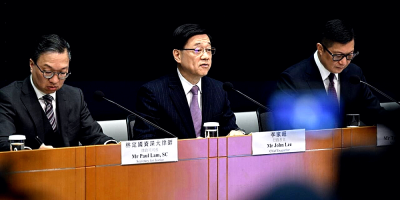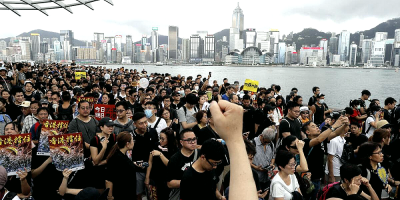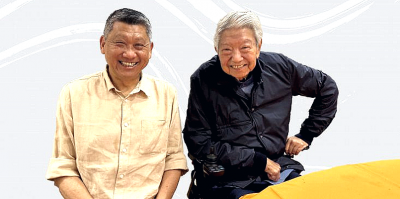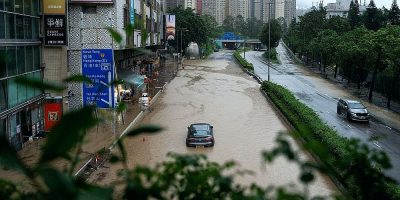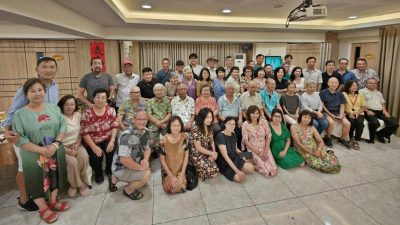From the 1980s through the 90s, Hong Kong was enshrouded in a martial arts craze that saw the emergence of a fantasy world of martial arts established in the local comic market.
Each of the characters delineated in the comics boasted very distinct personalities and was invariably gifted with exemplary martial art skills that could easily destroy the most potent rivals.
And very often, the superior kungfu skills were accompanied by an overpowering aura that was bound to stun the challengers as well as bedazzled readers, a sensation that gives Hong Kong comics or manhua an irresistible charm through the magical use of colors, lines and elaborate actions to interpret the strength and explosiveness of the many different patterns in Chinese martial arts.
Although full-color Hong Kong comics is only a “framed world,” its clout has spread far and wide from its tiny home base to much of the continent and beyond, allowing readers from all across the world to indulge in their wildest martial art dreams.
Powerful imagination
46-year-old Heyman Saiful is veritably a “senior” fan so inextricably addicted to Hong Kong comics.
From Heyman’s mouth we came to realize that the Malay fans of Hong Kong comics do have a name for this genre of illustrated literature, manhua (the Romanized rendition of comics in Chinese 漫画), a mention of which will spontaneously pool them together in the same circle of interest and start endless chats and discussions about the plots in their favorite comics.
Heyman recalled that the Bahasa Malaysia versions of Hong Kong comics only made their debut at local newsstands around 1992. Prior to that, young Malays were mostly engrossed in local productions in the likes of Bambino and later magazines such as Ujang and Gila-Gila, among others.
“You might wonder from where the Malay youngsters came to now about manhua.
“Where else but the TV?
“When I was young I loved the movies of Jackie Chan, and Fong Sai Yuk portrayed by Jet Li!
“Although I couldn’t understand a word of Cantonese, we had the Malay subtitle!
“Compared to what we have today, the martial art scenes back in those years were extremely smooth-flowing, and every strike or kick was so fascinating and thrilling.
“Although the movie was in Cantonese, we seemed to comprehend the storyline. If we happened to see A hitting B, for instance, very soon someone else would come to seek revenge…Yes, we all had very powerful imagination!”
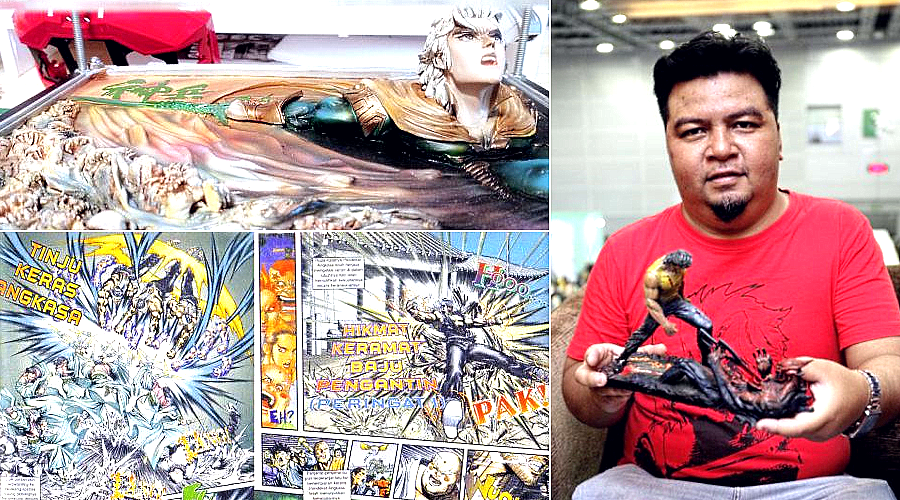
Evocative representation
Heyman said he had no idea who was the first to promote Hong Kong comics among the Malay reading public. It could be that the publishers had noticed the promising business opportunities in this sector and were prepared to get the comics translated into Malay to facilitate the transition of Malay readers to the world of Chinese martial arts!
The thin pictorial comic books are packed with enthralling colorful images that vividly depict the every move and strike of the masterly martial artist, very often given the slow-motion treatment to allow the reader to immersively visualize the silky smooth and exact articulation of every move.
Almost every character in the comic books is vividly sketched and finely detailed to illustrate the destiny of the character. The comic artists have been vastly successful in detailing the inner worlds of the characters in their works, and have clearly outlined their unique traits and personalities.
Heyman has a particular fondness for the martial art actions in Hong Kong comics which are unbelievably good at laying out and amplifying the martial art ambiance that will transport the reader to the core of its explosiveness, putting him right in the middle of a brutal fighting scene for the ultimate reading pleasure.
Heyman admits that the rapidly changing moods of the fighting scenes occasionally imparting the fiery and freezing effects, along with the progressively changing hues and the overwhelming stratified feel, make him exceedingly exhilarated, compelling him to keep following the developments of the storyline until the finale.
The mastery in translating names
Additionally, Hong Kong comics also boast another unique characteristic, namely the use of wildly liberal words to protrude the onomatopoeia of the fights or the names of martial art moves.
“I could sense that the language used in manhua is unusually beautiful, and I think the translator must have had a masterful command of the language. Meanwhile, the Japanese manga translation is full of short-forms.”
In Legend of Emperors, all the martial art moves have very melodic names. Without a question, the Chinese language can deliver a reader to the martial art realm much more readily and profoundly.
After the book is translated into the Malay language, the reader will have to use the vivid illustrations on the pages to fill the linguistic vacuum in order to extend their imaginativity and to visualize the poetic realm intended by the author.
In Legend of Emperors, Goddess Nüwa created 浑天宝鉴 which has been translated to Cermin Sakti Kayangan in Malay.
We must admit that the publisher must have wracked his head to come up with such a name. Other examples include: the first martial art move in Awan Putih (白云烟 White Cloud Smoke), the eighth move Fajar Emas (金晨曦 Golden Dawn Rays), and the ninth move Kubah Berdarah (血穹苍 Blood Vault).
In Two Most Honorable Knights, Yan Nantian (燕南天) has been translated as Pendekar Angkasa, while his 嫁衣神功 becomes Hikmat Keramat Baju Pengantin, and 南天神拳 is Tinju Keras Angkasa.
Fans groups
Heyman says Hong Kong comics has a huge following among young Malays, with at least ten dedicated Facebook interest groups, including Legasi Manhua Malaysia and Empayar Manhua Malaysia where fans can share their views as well as their collections.
He said during its heyday, the Legasi Manhua Malaysia FB group even invited Street Fighter author Hui King Sum, The Three Swordsmen author Jack Fung as well as Hong Kong comic master Tony Wong’s student Dick Kwong, to visit Malaysia.
“We appreciated such a rare opportunity because these celebrated Hong Kong comic artists were willing to come here to share their views with the Malaysian fans.”
As a die-hard fan of Hong Kong comics, sure enough Heyman also keeps a good collection of manhua collectibles, including large numbers of figurines of comic characters and weapon models.
For him, and all other comic fans as well, space is never enough when it comes to expanding their collections.
After he started working, Heyman tried to collect as many back copies of comic books as possible so that he can enjoy reading them at home whenever he was free.
Heyman lived with his family when he was still single, and his family was apparently unhappy that he had piled up his room and even common areas with lots and lots of comic books.
After marriage, his mother moved in to stay with him. She would ask why he would pack the house with so many comic books.
As he did not know how to handle such an invasive comic collection, he had to let his mother decide what to do with it.
“So, mom burned half of the comic books and sold the other half to the recycling agent for RM80!
“To be honest, I didn’t feel the slightest sadness back then. I was very calm! Anyway, I had already read all of them and could commit them to memory actually.”
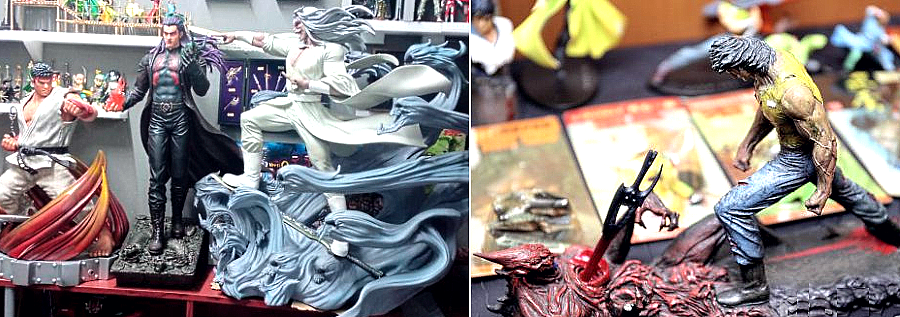
How stupid!
Heyman said Tony Wong auctioned off the statues and figurines at his office before he was sent to jail after being declared bankrupt, and he was fortunate enough to have acquired a Weapons of the Gods figurine for RM300 from a seller who told him it was a souvenir given to Tony Wong by a company.
Wong was surprised but elated when he sought his autograph with this rare collection.
After he joined an interest group in 2014, Heyman came to realize that the decision he made back then was downright stupid.
“The seller of the complete collection of Tony Wong’s Legend of Emperors from volume 1 to 163 was asking for RM1,900.”
When asked whether he would be willing to pay this price, Heyman said he was lucky to have bought it for only RM1,200 five years back!
“Many people have the same kind of experience as me: our families sell the comic books at much lower prices, or have them given away or sent for recycling!”
Even as prices of second-hand Hong Kong comic books have been climbing steadily in recent years, Heyman still willingly forks out the money to acquire them.
In the past, comic books were sold with some gifts such as letter openers or models, and Heyman was not going to give them a miss, acquiring them one by one from fellow comic fans in the FB group.
The morals in comics
Today, he has one of his rooms modified just to display his favorite comic books and figurines which he aptly christened Bilik Keramat, the Sacred Room!
“Isn’t the Hong Kong comic world like that?”
Indeed, it takes a whole lifetime of effort to search for a sacred place where one can isolate oneself from the rest of the mortal world and concentrate on practicing martial arts in the absence of worldly distractions, until the skill is so powerfully commanded that one can come out of seclusion and take down the enemies.
“Many martial art maestros go in with black hair and come out seasoned white-haired blokes. So, if you see someone in white hair in the comic book, he must be the most powerful in martial arts,” Heyman said smilingly.
Heyman has a strong passion for the character Ji Fa in Legend of Emperors, and Tian Wen in Weapons of the Gods.
He said the story of Ji Fa is very inspiring, and he feels touched seeing how Ji Fa practices Xiantian Qiankun Gong (先天乾坤功) to eventually beat King Zhou.
“Some of the stories in Hong Kong comics incorporate also elements of the ancient history of China, such as Emperor Shi Huangdi and the Great Wall of China. Recalling my old history class, indeed there was this emperor called Shi Huangdi!
“While comics are verily works of pure fabrication, the historical facts and the chronology cannot be faked or altered, although the author can conceive a plot based on the historical background.”
Many people feel that comics are just for recreational reading with hardly any nutritional value. But to Heymen, we can catch a glimpse into the many perspectives of human life from these comic books, which will lead us to experience the lives of the characters and how they deal with their predicaments, and apply them in our day-to-day lives.
He cited the example of Weapons of the God which underscores the postulation that not the strongest in martial arts will get to rule the world.
Surrounding the main characters are often heartwarming stories as well as unreserved support from family, along with love and friendship. Everyone in the story is willing to sacrifice for the sake of the main character, giving him their staunchest support.
Even if you are not the strongest to start with, you still get to beat your powerful rivals as long as you have the right disposition,
Heyman feels that Hong Kong comics is not just about violence, killings and seeking revenge; there is often some educational element in the storyline, such as how a man should communicate with his father, and how a husband should learn to respect and love his wife and children.
In the comics, even if a father is cruel and tyrannical, the son may not always be that bad, and can even depose the father’s wicked regime in order to save the subjects, and become a benevolent king himself.
Hong Kong comics also teaches us not to be jealous or malicious towards other people because we will not have a good ending!
ADVERTISEMENT
ADVERTISEMENT







